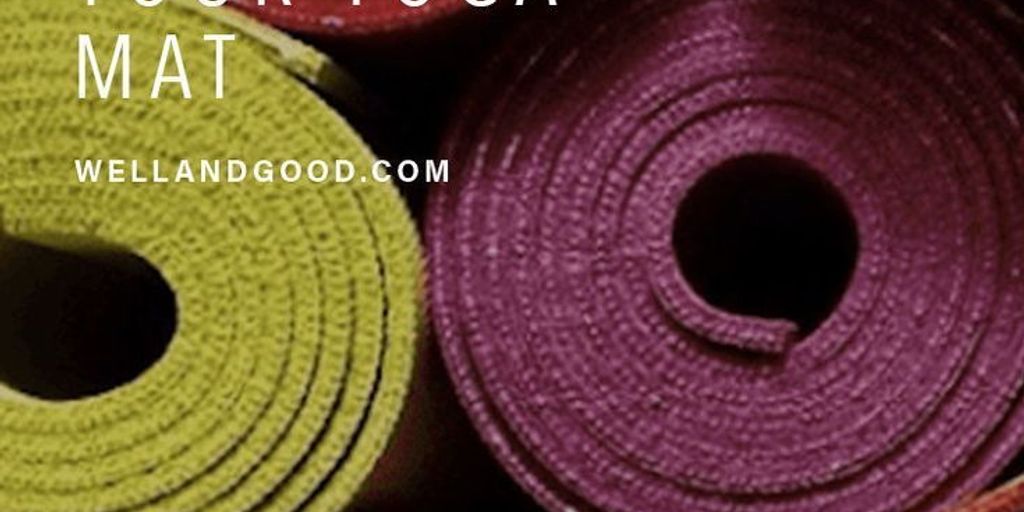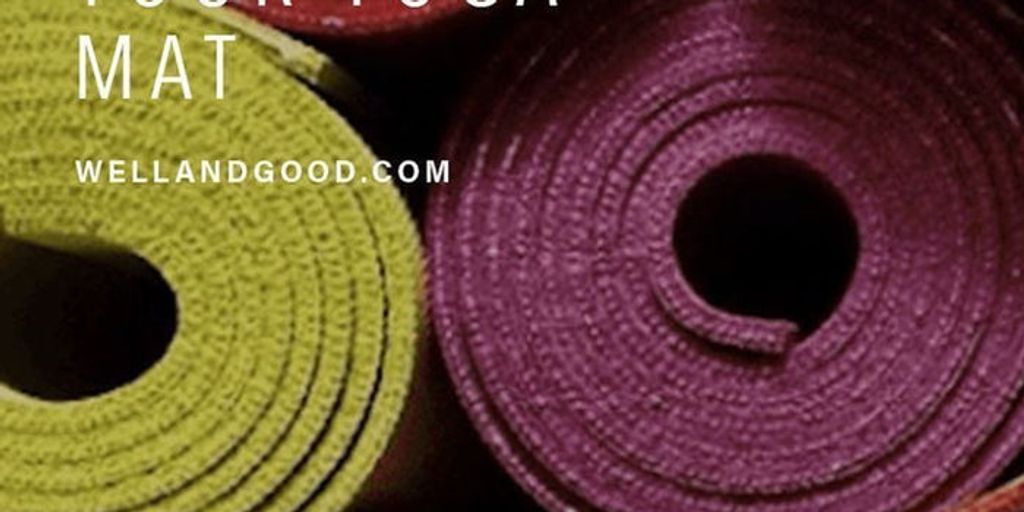
Choosing the Perfect Yoga Mat: A Comprehensive Guide
Choosing the right yoga mat can make a big difference in your practice. With so many options out there, it can be hard to know where to start. This guide will help you understand the different types of mats, what to look for based on your needs, and how to care for your mat. We'll also cover eco-friendly choices and price ranges to help you get the best value.
Key Takeaways
- Different yoga mats are made from various materials like rubber, PVC, and TPE, each offering unique benefits.
- Consider your yoga style and body type when choosing the thickness and texture of your mat.
- Eco-friendly mats are made from natural materials and are better for the environment.
- Price doesn't always equal quality; there are good options at every budget level.
- Proper care and storage can extend the life of your yoga mat.
Understanding Different Types of Yoga Mats
Material Options
Yoga mats come in various materials, each with its own benefits. PVC mats are durable and provide excellent grip, but they are not eco-friendly. Natural rubber mats offer a good balance of grip and comfort, while cork mats are known for their anti-microbial properties. Jute mats are eco-friendly and provide a natural feel, but they may not be as cushioned.
Thickness and Density
The thickness and density of a yoga mat can greatly affect your practice. Thicker mats, like those that are 6mm or more, offer more cushioning, which is great for joint support. However, they can be less stable for balance poses. Thinner mats, around 3mm, provide better stability but less comfort. Choosing the right thickness depends on your personal needs and the type of yoga you practice.
Texture and Grip
The texture of a yoga mat affects its grip and how much you might slip during practice. Mats with a textured surface provide better grip, which is essential for poses that require stability. Smooth mats can be slippery, especially if you sweat a lot. Some mats are designed with a non-slip surface to help you maintain your poses without slipping.
Understanding the different types of yoga mats can help you make an informed decision and enhance your yoga practice.
Evaluating Your Personal Needs
Yoga Style Considerations
Different yoga styles require different types of mats. For example, if you practice hot yoga, you might need a mat with extra grip to handle sweat. On the other hand, a thicker mat might be better for gentle yoga styles to provide more cushioning. Think about your yoga style before choosing a mat.
Body Type and Comfort
Your body type can also affect your choice. Taller individuals might need longer mats, while those with sensitive joints might prefer mats with more padding. Comfort is key, so make sure to pick a mat that feels good for your body.
Portability and Storage
If you travel often or attend classes outside your home, a lightweight and easy-to-carry mat is essential. Some mats come with carrying straps or bags, making them easier to transport. Consider how easy it is to store your mat when not in use.
Choosing the right yoga mat involves thinking about your personal needs and preferences. This ensures you get the most out of your practice.
Eco-Friendly and Sustainable Choices
Natural Materials
When choosing a yoga mat, it's important to consider eco-friendly options. Natural rubber, organic cotton, and jute are great choices. These materials are not only good for the environment but also provide excellent support and comfort during your practice.
Non-Toxic Manufacturing
Look for mats that are made without harmful chemicals. Some brands prioritize sustainability by using non-toxic processes. This ensures that your mat is safe for both you and the planet.
Recyclability and Disposal
Consider how you will dispose of your mat when it wears out. Mats made from recyclable materials are a better choice. Some companies even offer recycling programs, making it easier to dispose of your mat responsibly.
Choosing eco-friendly and sustainable yoga mats helps protect the environment while providing a comfortable and safe practice.
Price vs. Quality: Making the Right Investment
Budget-Friendly Options
When you're just starting out, you might not want to spend a lot on a yoga mat. Budget-friendly options can still offer good quality. Look for mats that provide decent grip and comfort without breaking the bank. These mats are perfect for beginners or those who practice yoga occasionally.
Mid-Range Selections
If you're more serious about your practice, you might want to invest a bit more. Mid-range mats often offer better durability and extra features like better grip or extra cushioning. These mats are a good balance between cost and quality, making them a popular choice for regular practitioners.
High-End Mats
For those who practice yoga daily or teach classes, high-end mats are worth the investment. These mats are made from premium materials and offer the best in comfort, grip, and durability. While they are more expensive, they can last for years, making them a smart long-term investment.
Choosing the right yoga mat is crucial for a comfortable practice. This guide covers understanding your yoga needs, researching options, and comparing features like material and grip. It emphasizes the importance of reading reviews, testing mats in stores, and considering budget. Key takeaways include knowing your practice style and seeking expert recommendations to find the perfect mat for your needs.
Caring for Your Yoga Mat
Cleaning Techniques
Keeping your yoga mat clean is essential for both hygiene and longevity. Regular cleaning helps remove sweat, dirt, and oils that can build up over time. For a simple cleaning solution, mix a few drops of mild dish soap, like Dawn or Seventh Generation, with water. Use a soft cloth to gently scrub the mat, then rinse with clean water and let it air dry.
Storage Tips
Proper storage can extend the life of your yoga mat. Always roll your mat with the top side facing out to prevent curling. Store it in a cool, dry place away from direct sunlight. If you have limited space, consider a wall-mounted rack or a mat bag for easy storage.
When to Replace Your Mat
Even with the best care, yoga mats don't last forever. Look for signs of wear and tear, such as thinning, fraying, or loss of grip. If your mat no longer provides the support and stability you need, it might be time for a replacement.
Taking good care of your yoga mat ensures a better practice and a longer-lasting mat. A little effort goes a long way in maintaining its quality and performance.
Additional Features to Consider
Alignment Guides
Alignment guides are markings on the mat that help you position your hands and feet correctly during poses. These guides can be especially helpful for beginners who are still learning proper form. They can also benefit experienced yogis by ensuring consistent alignment.
Extra Cushioning
If you have sensitive joints or prefer a softer surface, mats with extra cushioning might be the right choice for you. Extra padding can provide additional comfort and support, making your practice more enjoyable. However, keep in mind that thicker mats can be heavier and less portable.
Travel-Friendly Mats
For those who travel frequently, a travel-friendly mat is essential. These mats are usually lighter and more compact, making them easy to carry in a suitcase or backpack. Some travel mats are even foldable, allowing for easy storage without taking up much space.
When choosing a yoga mat, consider these additional features to enhance your practice and meet your specific needs.
When choosing yoga gear, it's important to think about extra features that can make your practice better. From foldable mats for easy travel to durable straps for those long stretches, the right accessories can make a big difference. Want to explore more options? Visit our website to find the perfect gear for your yoga journey.
Conclusion
Choosing the perfect yoga mat can seem tricky, but it doesn't have to be. By thinking about what you need, like thickness, material, and grip, you can find a mat that works best for you. Remember, the right mat can make your yoga practice more enjoyable and comfortable. So take your time, do your research, and pick a mat that helps you feel good and stay focused during your sessions. Happy yoga!
Frequently Asked Questions
What is the best material for a yoga mat?
The best material depends on your needs. PVC mats are durable, while rubber and cotton mats are eco-friendly.
How thick should my yoga mat be?
A standard mat is about 1/8 inch thick. Thicker mats (1/4 inch) offer more cushioning, which is good for sore joints.
How do I clean my yoga mat?
You can clean your mat with a mix of water and mild soap. Wipe it down and let it air dry.
Is an expensive yoga mat worth it?
An expensive mat can last longer and offer better grip and comfort. But there are also good budget-friendly options.
Can I use a yoga mat for other exercises?
Yes, you can use a yoga mat for exercises like Pilates or stretching. Just make sure it has a good grip.
When should I replace my yoga mat?
You should replace your mat if it starts to wear out or lose its grip. This usually happens after a year or so of regular use.


